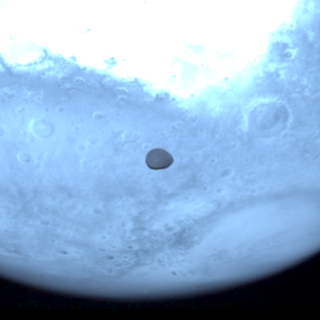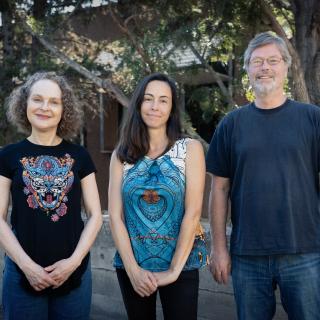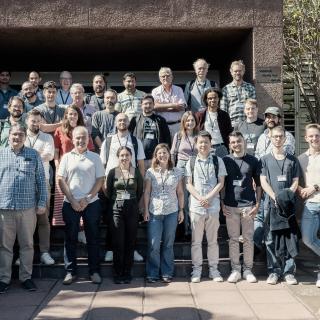It may interest you
-
 ESA’s Hera mission for planetary defense performed a flyby of Mars, as part of its gravitational assistance manoeuvre to shorten its journey to the binary asteroid system Didymos. During the flyby, the spacecraft came around 5000 km from the surface of Mars, having also the opportunity to obtain images of its two moons, Deimos (during the approach) and Phobos (when departing Mars). Julia de León, Javier Licandro, and George Prodan, researchers at the Instituto de Astrofísica de Canarias, participate in this mission, successfully launched from Cape Cañaveral, Florida (USA) on October 7, 2024Advertised on
ESA’s Hera mission for planetary defense performed a flyby of Mars, as part of its gravitational assistance manoeuvre to shorten its journey to the binary asteroid system Didymos. During the flyby, the spacecraft came around 5000 km from the surface of Mars, having also the opportunity to obtain images of its two moons, Deimos (during the approach) and Phobos (when departing Mars). Julia de León, Javier Licandro, and George Prodan, researchers at the Instituto de Astrofísica de Canarias, participate in this mission, successfully launched from Cape Cañaveral, Florida (USA) on October 7, 2024Advertised on -
 El Instituto de Astrofísica de Canarias (IAC) sigue afianzando su liderazgo investigador y de atracción de talento científico con el programa “ Investigadores Visitantes” de Fundación Occident. En este recién terminado año 2024, el programa cumple una década ininterrumpida de trabajo atrayendo a decenas de personas investigadoras cada año que han realizado estancias, de mínimo un mes y hasta tres meses, en el IAC. El programa permite que el personal investigador invitado comparta espacio y trabajo con miembros de los distintos grupos de investigación establecidos en el IAC, de forma que elAdvertised on
El Instituto de Astrofísica de Canarias (IAC) sigue afianzando su liderazgo investigador y de atracción de talento científico con el programa “ Investigadores Visitantes” de Fundación Occident. En este recién terminado año 2024, el programa cumple una década ininterrumpida de trabajo atrayendo a decenas de personas investigadoras cada año que han realizado estancias, de mínimo un mes y hasta tres meses, en el IAC. El programa permite que el personal investigador invitado comparta espacio y trabajo con miembros de los distintos grupos de investigación establecidos en el IAC, de forma que elAdvertised on -
 The Instituto de Astrofisica de Canarias hosted this week the global meeting of the members of the European project The Whole Sun , a project approved and funded by the European Research Council (ERC) as part of its Synergy Grant calls. The duration of the project is seven years (from 2019 to 2026) and its full title is: “The whole Sun: untangling the complex physical mechanisms behind our eruptive star and its twins”. The main objective of the ERC’s Synergy Grant calls is to promote the joint work of groups of researchers in different European institutions so that all the necessary toolsAdvertised on
The Instituto de Astrofisica de Canarias hosted this week the global meeting of the members of the European project The Whole Sun , a project approved and funded by the European Research Council (ERC) as part of its Synergy Grant calls. The duration of the project is seven years (from 2019 to 2026) and its full title is: “The whole Sun: untangling the complex physical mechanisms behind our eruptive star and its twins”. The main objective of the ERC’s Synergy Grant calls is to promote the joint work of groups of researchers in different European institutions so that all the necessary toolsAdvertised on